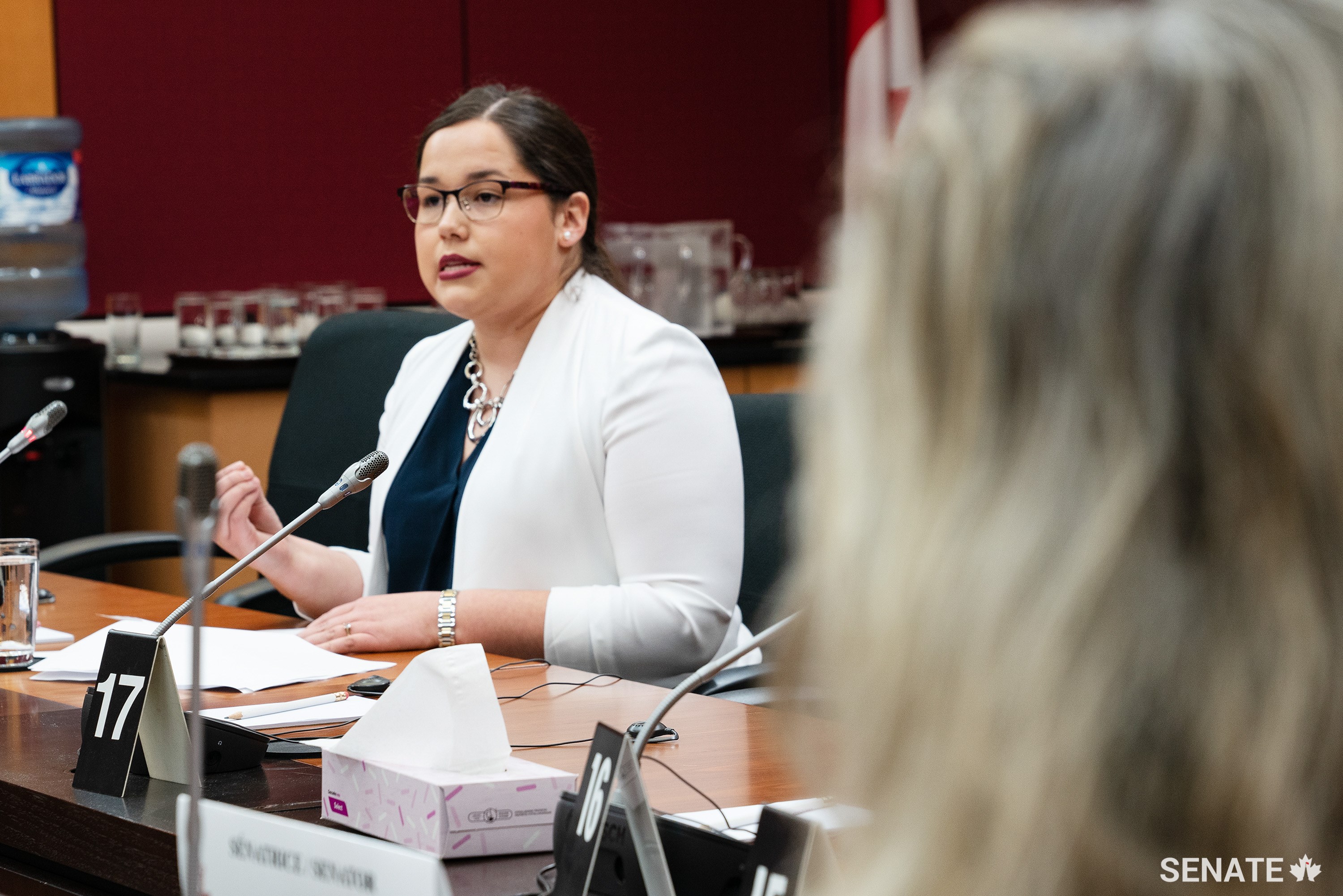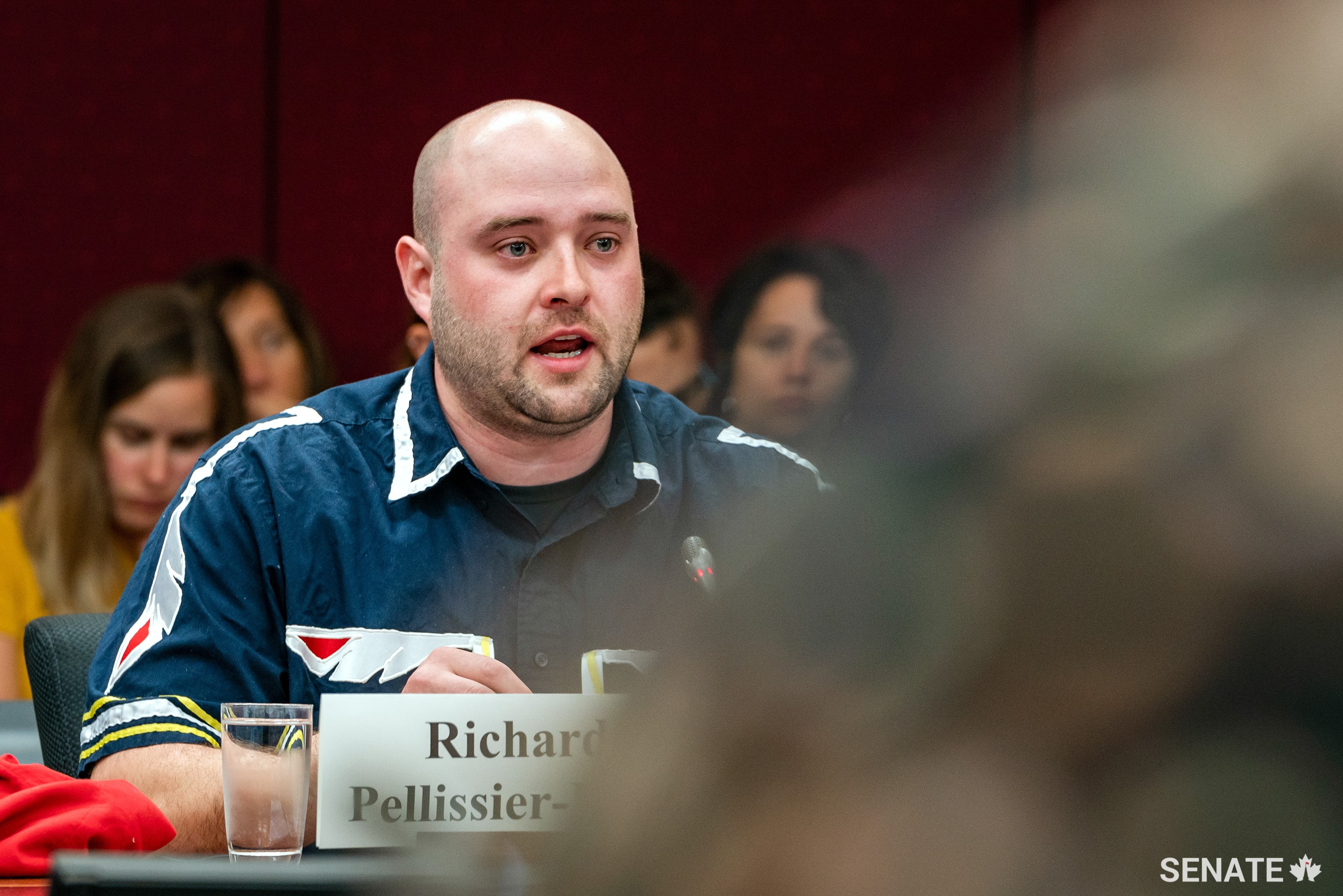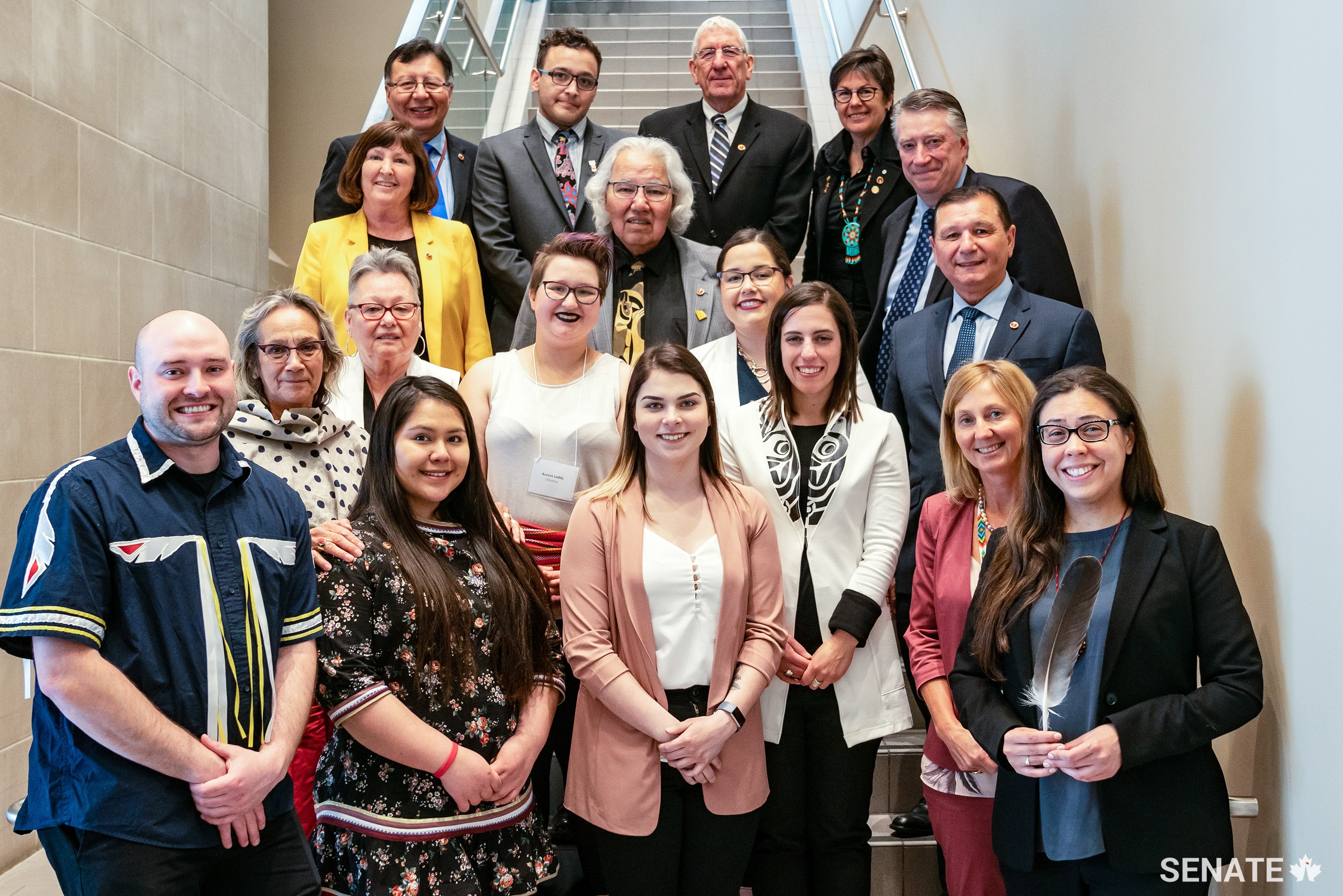Senators hear stories of resilience from Indigenous youth leaders

She was in Grade 9 when a classmate told Karlee Johnson she would be better off leaving her First Nations reserve on Cape Breton Island because she would have a more successful life.
She took those words to heart and, later that night, she went to her mom and asked to go to a different school. But her mom insisted she stay, explaining why she should continue going to school in Eskasoni.
“You will be greeted by Mi’kmaq teachers and speakers, and we have very successful people who came from that high school,” Karlee, now 23, recalled her mom saying at the time.
She heeded her mom’s advice and earned a high school diploma. She had a 98% average in her final year and was among 100 students accepted into the bachelor of science (medical sciences) program at Dalhousie University.
Last June, she graduated from that program and returned to her community to apply her academic background to her work as a capacity development lead for cancer learning with the local tribal council, the Union of Nova Scotia Indians.
Karlee, whose mother tongue is Mi’kmaq, accomplished all of this while holding on to her culture and language, and with the support of her family and community members.
She shared her story with the Senate Committee on Aboriginal Peoples because she said she wants the federal government to encourage Indigenous peoples to embrace their rich and diverse cultures, and for them to have the support they need to thrive in their own communities.
Senators on the committee listened to her story during Youth Indigenize the Senate Day earlier this month.
The fourth edition of the event saw eight Indigenous youth leaders from across Canada share their vision on how Canada can build a new relationship with First Nations, Inuit and Métis peoples, which was the focus of the committee’s recent study.
The government should also implement programs that would provide healing and empowerment support to Indigenous peoples, she said.
Senators learned that not all youth, however, benefitted from the sense of community Karlee had experienced growing up. Aurora Leddy, 22, testified that she often felt invisible as a Métis person at school.
“This was something I realized from a young age. Métis, for various reasons, have always been a little more hidden. Whether because we were targeted after the Red River resistance to just not having the same rights.”
“In Alberta, for the longest time, we didn’t even have our own harvesting rights. They were taken away. I’m glad today that we do have them back, but they are still limited,” she said.
“But the thing that needs to go forward is that we need to be heard and be just as equal.”
Even Jukipa Kotierk, 24, an Inuk woman from Nunavut, said she almost didn’t agree to testify at Youth Indigenize the Senate, “because I felt like I don’t belong.”
“It is also the exact reason why I am here,” she said.
Like Karlee, she credited the support of her community in Iqaluit for her well-being. Her region, however, has a suicide rate that is 5 to 25 times higher than the rest of Canada.
“This is unacceptable,” she testified. “Canada needs to be held accountable. Inuit need to exercise self-governance and sovereignty and be supported by Canada.”
She told senators she tries to combat the high suicide rate by volunteering with the help line in her territory and with the “We Matter Campaign”, which is an Indigenous youth-based multimedia platform that she said “helps encourage hope, strength and culture.”
As all eight youth testified, themes of empowerment, belonging and pride resonated with senators, who were moved by inspiring testimony and by the leadership they’ve shown in their communities.
“These remarkable youth leaders are such an inspiration to other young people and we were fortunate to have them share their perspectives with us,” said committee chair Senator Lillian Eva Dyck. “Hearing from young Indigenous people — who represent the fastest growing population in Canada — is key to addressing their needs and hopes for a better future.”
“Each year, I’m amazed by the stories these youth bring to the Senate,” said Senator Scott Tannas, deputy chair of the committee.
“They remind senators of the complicated history between Canada and Indigenous peoples and, more importantly, of the crucial work we have ahead of us at improving that relationship.”
Watch a recording of the committee meeting.





*Please note that as of July 31, 2022, the name of the Senate Committee on Aboriginal Peoples was changed to the Senate Committee on Indigenous Peoples. More information about this change can be found here.
Related articles
Tags
Committee news
Senators hear stories of resilience from Indigenous youth leaders

She was in Grade 9 when a classmate told Karlee Johnson she would be better off leaving her First Nations reserve on Cape Breton Island because she would have a more successful life.
She took those words to heart and, later that night, she went to her mom and asked to go to a different school. But her mom insisted she stay, explaining why she should continue going to school in Eskasoni.
“You will be greeted by Mi’kmaq teachers and speakers, and we have very successful people who came from that high school,” Karlee, now 23, recalled her mom saying at the time.
She heeded her mom’s advice and earned a high school diploma. She had a 98% average in her final year and was among 100 students accepted into the bachelor of science (medical sciences) program at Dalhousie University.
Last June, she graduated from that program and returned to her community to apply her academic background to her work as a capacity development lead for cancer learning with the local tribal council, the Union of Nova Scotia Indians.
Karlee, whose mother tongue is Mi’kmaq, accomplished all of this while holding on to her culture and language, and with the support of her family and community members.
She shared her story with the Senate Committee on Aboriginal Peoples because she said she wants the federal government to encourage Indigenous peoples to embrace their rich and diverse cultures, and for them to have the support they need to thrive in their own communities.
Senators on the committee listened to her story during Youth Indigenize the Senate Day earlier this month.
The fourth edition of the event saw eight Indigenous youth leaders from across Canada share their vision on how Canada can build a new relationship with First Nations, Inuit and Métis peoples, which was the focus of the committee’s recent study.
The government should also implement programs that would provide healing and empowerment support to Indigenous peoples, she said.
Senators learned that not all youth, however, benefitted from the sense of community Karlee had experienced growing up. Aurora Leddy, 22, testified that she often felt invisible as a Métis person at school.
“This was something I realized from a young age. Métis, for various reasons, have always been a little more hidden. Whether because we were targeted after the Red River resistance to just not having the same rights.”
“In Alberta, for the longest time, we didn’t even have our own harvesting rights. They were taken away. I’m glad today that we do have them back, but they are still limited,” she said.
“But the thing that needs to go forward is that we need to be heard and be just as equal.”
Even Jukipa Kotierk, 24, an Inuk woman from Nunavut, said she almost didn’t agree to testify at Youth Indigenize the Senate, “because I felt like I don’t belong.”
“It is also the exact reason why I am here,” she said.
Like Karlee, she credited the support of her community in Iqaluit for her well-being. Her region, however, has a suicide rate that is 5 to 25 times higher than the rest of Canada.
“This is unacceptable,” she testified. “Canada needs to be held accountable. Inuit need to exercise self-governance and sovereignty and be supported by Canada.”
She told senators she tries to combat the high suicide rate by volunteering with the help line in her territory and with the “We Matter Campaign”, which is an Indigenous youth-based multimedia platform that she said “helps encourage hope, strength and culture.”
As all eight youth testified, themes of empowerment, belonging and pride resonated with senators, who were moved by inspiring testimony and by the leadership they’ve shown in their communities.
“These remarkable youth leaders are such an inspiration to other young people and we were fortunate to have them share their perspectives with us,” said committee chair Senator Lillian Eva Dyck. “Hearing from young Indigenous people — who represent the fastest growing population in Canada — is key to addressing their needs and hopes for a better future.”
“Each year, I’m amazed by the stories these youth bring to the Senate,” said Senator Scott Tannas, deputy chair of the committee.
“They remind senators of the complicated history between Canada and Indigenous peoples and, more importantly, of the crucial work we have ahead of us at improving that relationship.”
Watch a recording of the committee meeting.





*Please note that as of July 31, 2022, the name of the Senate Committee on Aboriginal Peoples was changed to the Senate Committee on Indigenous Peoples. More information about this change can be found here.


